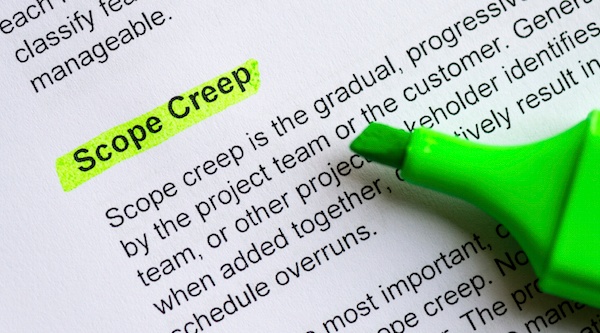Scope creep—the sneaky tendency for projects to grow beyond their original bounds—looms for every manufacturing project, including custom medical carts. The best way to avoid unnecessary scope creep is to first understand what it is and what it is not.
Scope creep is not making changes to get what your project team needs. If your goal is a custom medical cart and what you want changes, it’s OK! These agreed-upon changes can move the project forward toward production even if they slightly delay your time frame.
Scope creep is when a project loses direction through an excessive volume of changes either due to an uncontrolled expansion of goals and ideas during the design process, not having key decision makers involved on the team or both.
Managing and avoiding scope creep—and the increased costs, timeline extensions and general frustrations that go along with it—can be a challenging job. To help you to avoid this type of challenge, here are some ideas for how you can prevent it.
Team Composition
You need to build a robust project team and make sure to include the decision makers from the very start. This is crucial because their input will greatly affect the project outcome, and you definitely need their opinions sooner rather than later; otherwise you risk multiple rounds of changes and significant scope creep because their input wasn’t accounted for up-front.
Team Commitment and Understanding
Scope creep occurs most often when the entire team is not on the same page during the design process. Keeping everyone on the team involved for the duration of the project will create a solid foundation of understanding. Having a sound understanding of the project’s goals and time frame will keep everyone’s thoughts in line and get the project on the path to achieving your goals. This means that the same group is together at all of the project meetings. If this is not possible, we recommend that meeting notes are passed along to ensure everyone keeps up to date with what had been discussed.
Avoid “I’ll Know It When I See It”
A poor analysis of requirements—features, functionality, size, usage, durability and so on—at the outset of your project will definitely cause scope creep. It’s difficult to design to a vague, “I’ll know it when I see it” list of criteria.
Plan Your Project Timeline
Planning your project not only means identifying what design features and functionality you need, but also when you want the project to be completed. Laying out a timeline and saying “we will be finished brainstorming on X day” or “a design will be decided on by X date” helps manage project expectations and limits second guessing that can lead to scope creep.
Assign a Gatekeeper
Sticking to a solid price point and a predetermined timeline will help keep things on track. Having a member of your team assigned as the “coach” or “voice of reason” to enforce these boundaries will limit the chance of your project falling victim to scope creep.
With a custom design, you should get what you want, so don’t fear making changes. Just keep in mind how to identify and manage the risk of scope creep and its potential impact on your timeline and costs.
Have a custom medical cart project in mind? Contact Nick Rolf at 920.286.2217.


